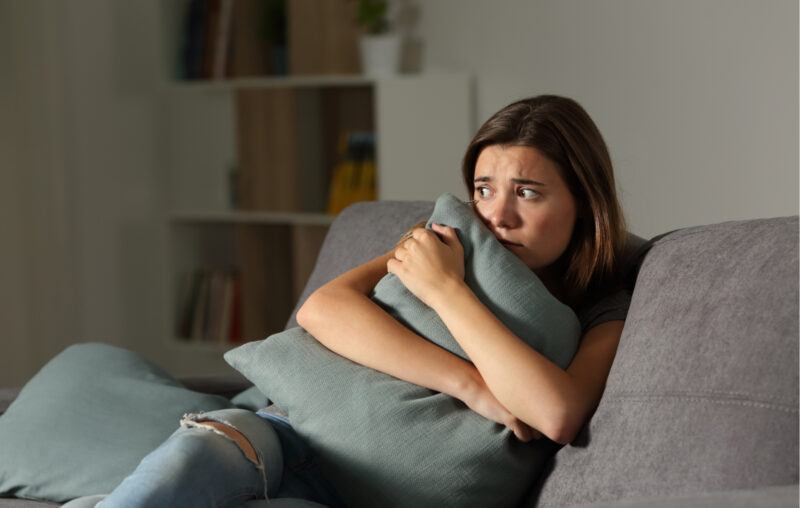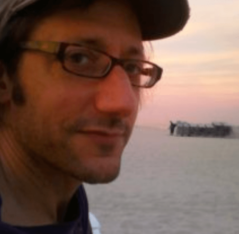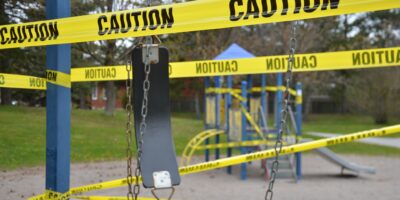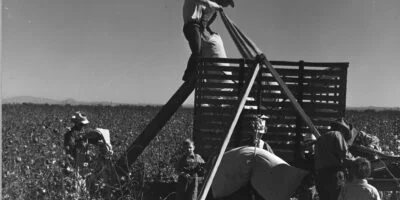Scaring Ourselves to Death

As a child, I was hospitalized for a month with the “Hong Kong Flu.” The doctors couldn’t cure me; I was discharged still sick. They were surprised I recovered. From my early brush with illness, I developed a long-standing interest in why some people with possibly fatal illnesses die and others recover.
As an academic who’s studied the history of medicine, I’ve come to realize that my survival stemmed, in part, from the fact that I wasn’t panicked about dying. An early case of the 1968 flu, mine preceded the hysteria that came later, with epidemic and reported deaths. The doctors didn’t even have a name for the flu yet. Also, quarantine hadn’t yet begun: my mother could stay with me in the hospital; her company cushioned me from the terror patients often experience when isolated in unfamiliar surroundings.
There is progress on the roll out of COVID-19 vaccines, but, meanwhile, cases soar. Until we achieve herd immunity with vaccines, our best defenses against serious COVID-related illness and death are infection avoidance and, if we are infected, our disease-fighting immune systems. Public policy has focused on the former (masks, social distancing, lockdowns), and relatively little attention has been paid to natural immunities and what we can do to keep ours in fighting trim. Worse still, policy may well have worked, recklessly, to undermine immune health, and this has had lethal consequences, including particularly high mortality among African Americans, who have greater exposure to the virus.
Doctors know that many COVID-related fatalities are not caused by the virus itself, but by immune system overreaction, in which virus-fighting cells mistakenly attack healthy organs. This is commonly observed in mortality cases of healthy or younger patients. Doctors do not know what causes such overreactions.
60 years of testing has, however, established a connection between stress and immune-system dysfunction, including overreaction. Close reading of comparative medical data suggests we should explore this connection more fully.
Much has been made of the fact that the African American COVID-19 death rate is significantly higher than that of whites. (It is 1.6 times higher as of early December; were the rates comparable, a staggering number of additional white Americans — nearly 100,000 — would now be dead.) Studies have recently shown that black and white COVID patients, hospitalized or not, die at the same rate, but the Black community produces more cases — or patients — per capita. The Black infection rate is significantly higher and sometimes dramatically higher than that of whites (60% higher in New York City and 400% in Michigan), due to more crowded living conditions and more employment in in-person jobs.^ And this is what leads to a higher death rate for African Americans.
Contrary to expectations, general health and access to quality health care may not play much of a role in the disparity. Indeed, a study reported on by the NY Times in early December finds that, despite the prevailing view, underlying conditions such as obesity and high-blood pressure had no significant effect on patient fatality rates.^ A July study of European nursing home deaths likewise demonstrated the lack of effect when it came to diabetes and obesity.*
This is in itself surprising, but the surprises multiply if one looks at the Spanish Flu. No one would argue Black Americans were generally healthier, lived in less-crowded conditions, or had greater access to quality medical care during the 1910s at the height of the Jim Crow Era (and, in fact, from 1911-17, Black mortality rates from influenza were higher than white ones). Yet the black fatality rate during the 1918-19 Spanish Flu epidemic was, shockingly, less than that of whites.**
Why would this have been the case? Some historians suggest that segregation effectively kept the entire Black population quarantined, and so, inadvertently, protected it from infection. But this explanation does not take into account that the races were, in fact, in regular contact during the Jim Crow era: though laws kept African Americans in separate schools, public bathrooms, and train cars, African American women routinely entered white homes to clean, cook, and care for white children. And Black men worked on trains up and down the East Coast. To take but two examples.
No doubt segregation mattered. But perhaps it mattered in a different way. Maybe segregation – which did not prevent viral transmission between the races but kept Black patients from white hospitals or their state-of-the-art units as well as conversations about the pandemic with whites – also spared them the unintended consequences stemming from an overtaxed medical culture and a general hysteria about the pandemic prevalent in white communities. (TV, Internet, and even radio news broadcasting which, with COVID, have been mainly responsible for hammering home frightening statistics and anecdotes, did not yet exist.)
When it came to hospitals, African Americans sick with Spanish flu received substandard treatment in segregated ones — housed in close quarters — or in Black-only ones with limited space. Jim Crow, that is, blocked Black Americans from hospitals where isolation in quarantine and anxious medical workers may well have wreaked havoc on patients’ nervous — and immune — systems.
A variety of 19th-century doctors observed that panic could be a disease accelerant. Some cancer surgeons observed that patients’ tumors enlarged in a matter of hours upon learning of cancer diagnoses in the area — and panicking about their own cases. At least one Spanish-Flu-era doctor observed that pandemics prompt fear and that panic in a person ill with the flu can have physiological — sometimes lethal — effects:
Patients died who were not very sick. Vigorous… young fellows of nineteen and twenty turned over and died because they had lost their courage, because other people were dying…. It was always so in an epidemic; patients died who, had they been isolated cases, would have recovered.
The passage, from Willa Cather, is based on observations by a US-Army doctor.
This sounds incredible to us, but may clear up the greatest mystery about the Spanish Flu: the death rate was highest for people in the prime of life. Consider that adults 18-40 were psycho-neurologically vulnerable because of war and mobilization: already haunted by casualties in their age group, they often found themselves getting influenza during an outbreak in groups of their peers, in army camps and on transport ships. Nursing-home residence during COVID, which is a much greater risk factor for death than age, is comparable.*
Finally, as Clifford Adams, a Jim-Crow-era Black Philadelphian who lived through the epidemic, reflected, “There wasn’t a lot of comforts in those days.”** Many African Americans lived in extreme poverty, some in fear of lynching, and all experienced discrimination. Occupied with ongoing threats, Black people could not afford to focus on being sick with a novel flu: the more immediate problems trumped concerns about potential serious illness or death. In this respect, African Americans were like today’s slum dwellers of Mumbai whose hand-to-mouth existence has been menaced by lockdowns — and whose COVID death rate is unexpectedly low: the infection fatality rate in New York City is 6 times Mumbai’s, due to the Indian city’s large slum population, where infection rates are nearly 60% but infection death rates are, contrary to all expectations, tiny, 1 in 1000 to one in 2000.***
With COVID, Black people have the worst of both worlds: their home and working conditions increase their exposure to the virus while access to hospitals and to omnipresent news media expose them as much as whites to pandemic-related panic that’s seized American social and medical environments. News broadcasting is filled with reports from health experts who have limited ways to combat a new virus that, despite its structural similarity to other coronaviruses, has inexplicably powerful and variable effects.
Remove sanctioned panic from the experience of COVID, and, as statistical and anecdotal evidence from other pandemics and around the world suggests, we have deprived the virus of a potency it simply doesn’t have on its own, even when it comes to the old and those with pre-existing conditions. As virologist Angela Rasmussen writes in The Guardian, “Our immune systems are mostly responding to this virus the way we’d expect.” “Our search for functional immunity to Sars-Cov-2 is less a biological quandary than a psychological one.” The CDC’s COVID-19 age-specified survival rates (the percent of the infected that survive) substantiate that our immune systems are working and our fears are overblown:
- Age 0-19 — 99.997%
- Age 20-49 — 99.98%
- Age 50-69 — 99.5%
- Age 70+ — 94.6%.****
We are in a vicious cycle. People thinking that, regardless of age, they are liable to die if they get COVID, leads to panic if they become ill or get a positive test. In turn, panic likely leads to some unnecessary COVID deaths among all age groups, results in higher death rates in socio-economically disadvantaged communities where viral transmission rates are higher, and fuels chronic or “long-haul” coronavirus illness. We need to turn down the fear.
—–
^ https://www.nytimes.com/2020/12/09/health/coronavirus-black-hispanic.html
* Gandal, Neil and Yonas, Matan and Feldman, Michal and Pauzner, Ady and Tabbach, Avraham D., “Long-Term Care Facilities As a Risk Factor for Death Due to COVID-19: Evidence from European Countries and U.S. States.” SSRN: https://ssrn.com/abstract=3616760 or http://dx.doi.org/10.2139/ssrn.3616760
** Black Spanish-Flu death data and related quotations are from Vanessa Northington Gamble, “‘There Wasn’t a Lot of Comforts in Those Days:’ African Americans, Public Health, and the 1918 Influenza Epidemic.”
https://www.ncbi.nlm.nih.gov/pmc/articles/PMC2862340/
*** Gandal, Keith and Gandal, Neil, “Why Is the New York City COVID Death Rate Four to Six Times that of Mumbai?” SSRN: https://ssrn.com/abstract=3676293










